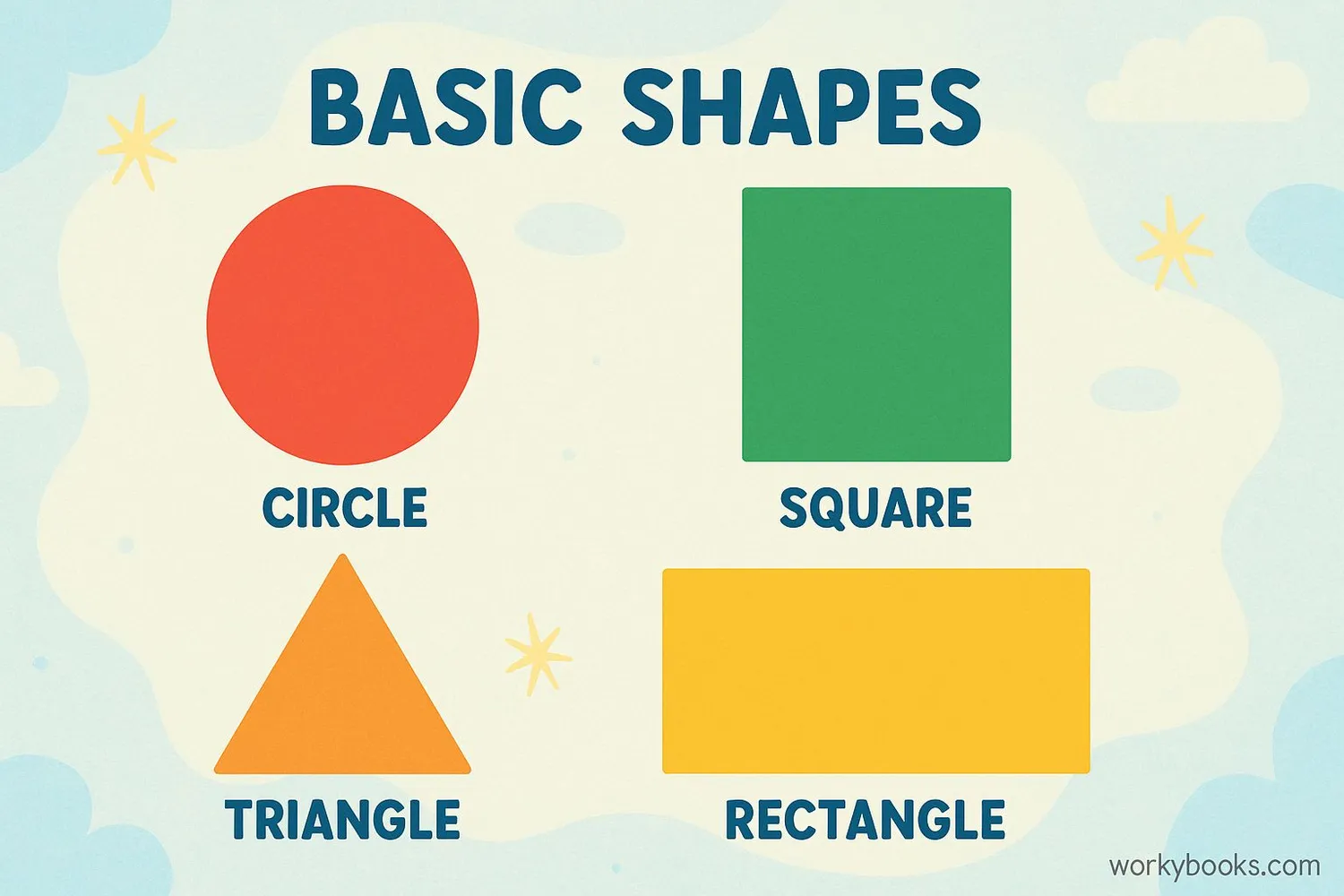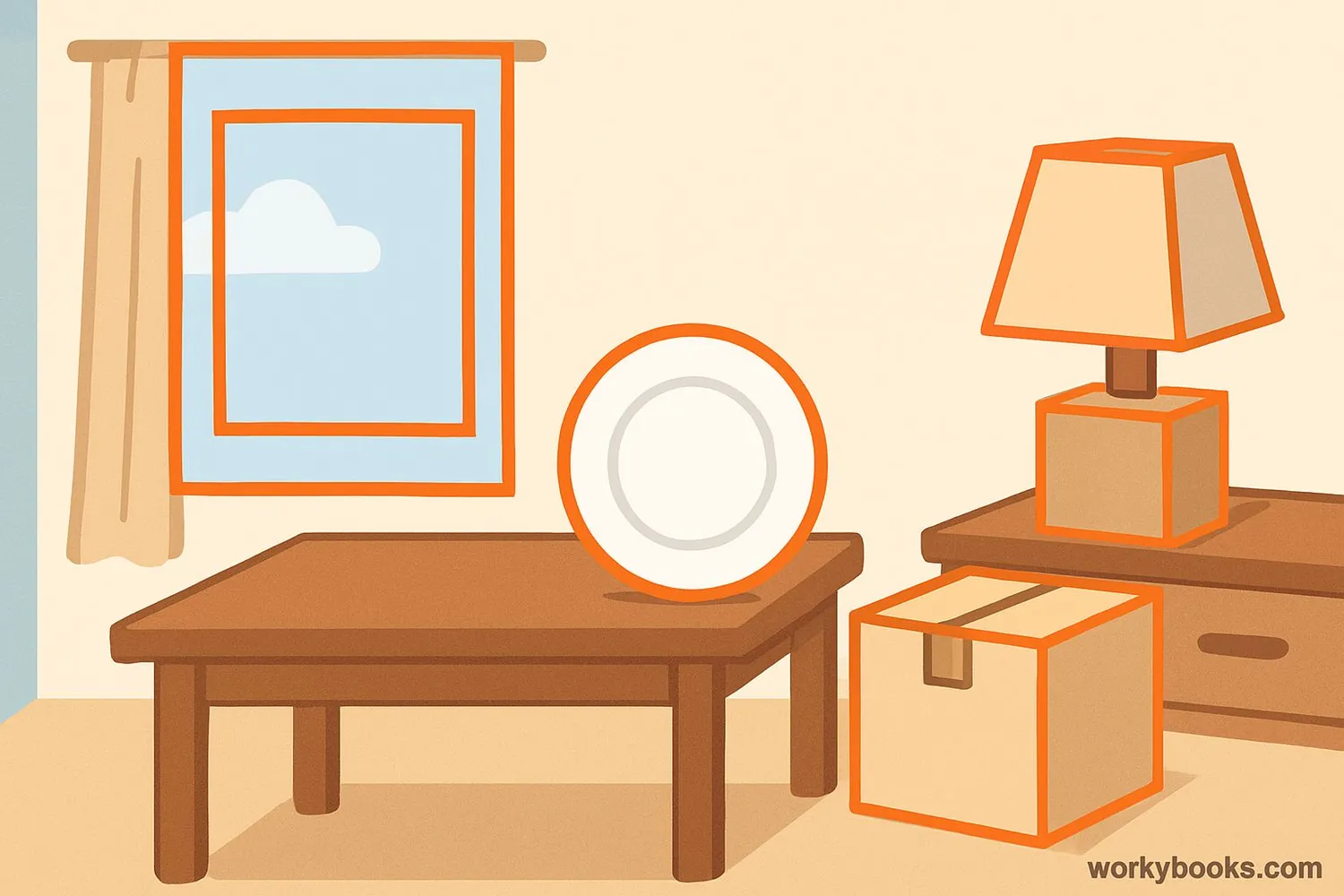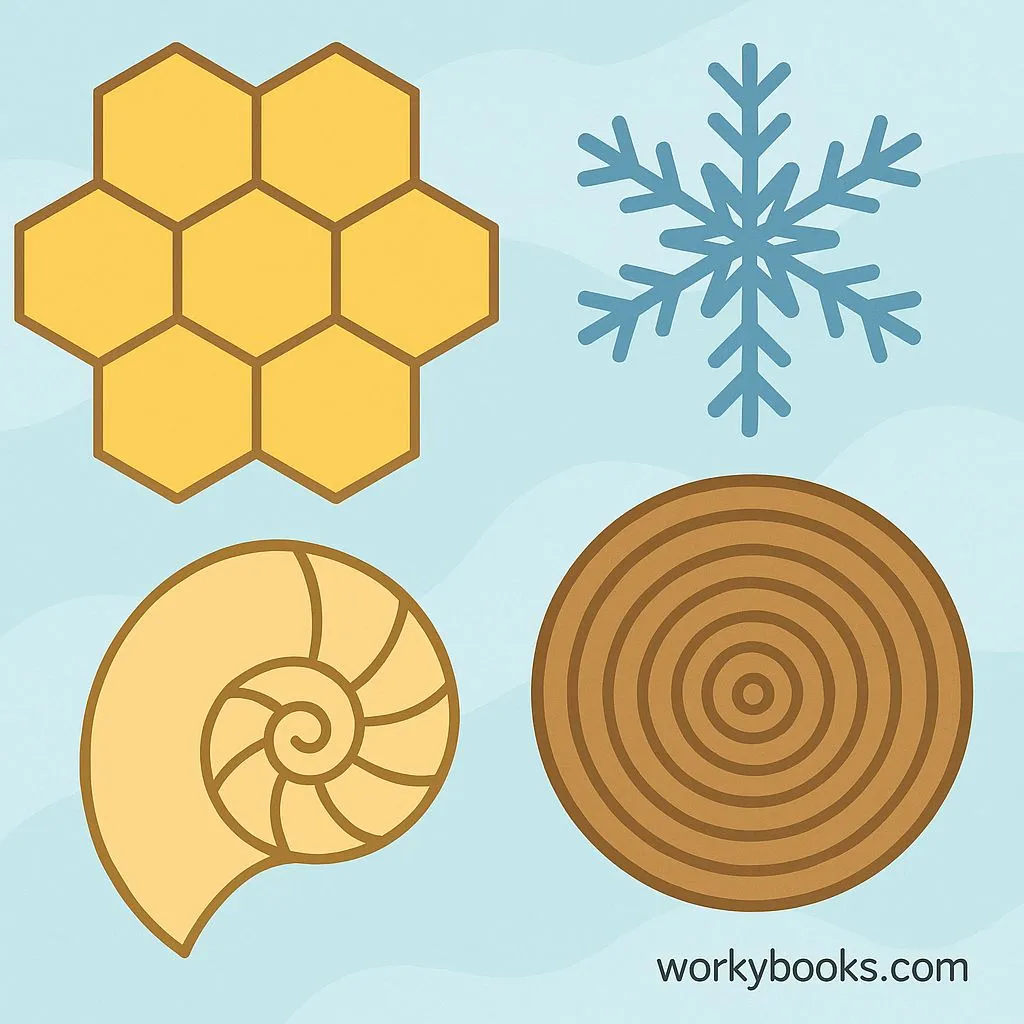Geometry in Daily Life - Definition, Examples, Quiz, FAQ, Trivia
Discover how shapes and patterns are all around us in our everyday world
What is Geometry?

Geometry is the mathematical study of shapes, sizes, positions, and properties of space. The word "geometry" comes from Greek words meaning "earth measurement."
But geometry isn't just something we learn in math class—it's all around us! From the circular wheels on cars to the rectangular screens we watch, geometric shapes form the building blocks of our world.
Understanding geometry helps us describe, analyze, and understand the physical world we live in. Architects use geometry to design buildings, artists use it to create beautiful patterns, and nature is full of geometric patterns.
Circles
Round shapes with no corners
Squares
Four equal sides and four right angles
Three sides and three angles
Four sides with opposite sides equal
Key Concept
Geometry helps us understand, describe, and interact with the world around us through shapes and patterns.
Geometry in Everyday Objects

Look around your home—geometry is everywhere! The door is a rectangle, the clock on the wall is a circle, and the tiles on the floor might be squares.
In the kitchen: Plates are circles, containers are cylinders, and refrigerator doors are rectangles. Even the slices of bread you eat are rectangles!
In your room: Your bed is a rectangle, your mirror might be an oval, and your books are rectangular prisms. The rug on your floor could be a circle or rectangle.
Outside: Stop signs are octagons (8 sides), wheels are circles, and windows are usually rectangles or squares. Even the soccer ball you play with is made of pentagons and hexagons!
Look Around
Take a moment to look around you. How many different geometric shapes can you find in the room you're in right now?
Geometry in Nature

Nature is the world's greatest mathematician! Beautiful geometric patterns appear everywhere in the natural world:
Honeycombs: Bees create perfect hexagonal cells in their hives. Hexagons are strong and use space efficiently—no gaps between cells!
Snowflakes: Every snowflake has a unique pattern, but they all have six-fold symmetry. This means their patterns repeat six times around a center point.
Flowers: Many flowers like daisies and sunflowers display spiral patterns that follow the Fibonacci sequence (a special number pattern in mathematics).
Spiderwebs: Spiders create intricate circular webs with radial symmetry, with threads radiating out from the center like spokes on a bicycle wheel.
Trees: If you look at a tree trunk's cross-section, you'll see concentric circles called growth rings that tell the tree's age.
Nature's Patterns
Natural geometric patterns aren't just beautiful—they often serve important functions like strength, efficiency, and optimal space usage.
Geometry in Art and Architecture

Artists and architects have used geometry for thousands of years to create beautiful and stable structures:
Ancient Architecture: The Egyptian pyramids are massive geometric shapes (square bases with triangular sides). The Romans used arches (curved shapes) and domes (half-spheres) in their buildings.
Islamic Art: Beautiful geometric patterns decorate mosques and palaces. These intricate designs often use repeating patterns of stars, polygons, and interlocking lines.
Modern Architecture: Skyscrapers are often rectangular prisms or cylinders. The famous Sydney Opera House has sail-like structures based on sections of spheres.
Visual Art: Artists like Piet Mondrian created paintings using only horizontal and vertical lines with primary colors. M.C. Escher created amazing artworks using tessellations (repeating patterns that fit together without gaps).
Create with Shapes
You can create your own geometric art using simple shapes. Try making a picture using only circles, squares, and triangles!
Geometry Quiz
Test your knowledge about geometry in daily life with this 5-question quiz. Choose the correct answer for each question.
Frequently Asked Questions
Here are answers to common questions about geometry in daily life:
Geometry Trivia
Discover interesting facts about geometry:
Ancient Geometry
The ancient Egyptians used geometry over 4,000 years ago to reset property boundaries after the Nile River flooded each year. The word "geometry" actually means "earth measurement" in Greek.
Fibonacci in Nature
The Fibonacci sequence (0, 1, 1, 2, 3, 5, 8, 13...) appears often in nature. The number of petals on flowers often follows this pattern: lilies have 3 petals, buttercups have 5, and daisies can have 34, 55, or even 89 petals!
Pyramid Precision
The Great Pyramid of Giza in Egypt is aligned with amazing precision. Its sides are aligned almost perfectly with the four cardinal directions (north, south, east, west) with an error of less than 1/15th of a degree.
The Number Pi (π)
The ratio of a circle's circumference to its diameter is always the same number, no matter how big or small the circle is. This number is called pi (approximately 3.14) and it appears in many formulas involving circles and spheres.


